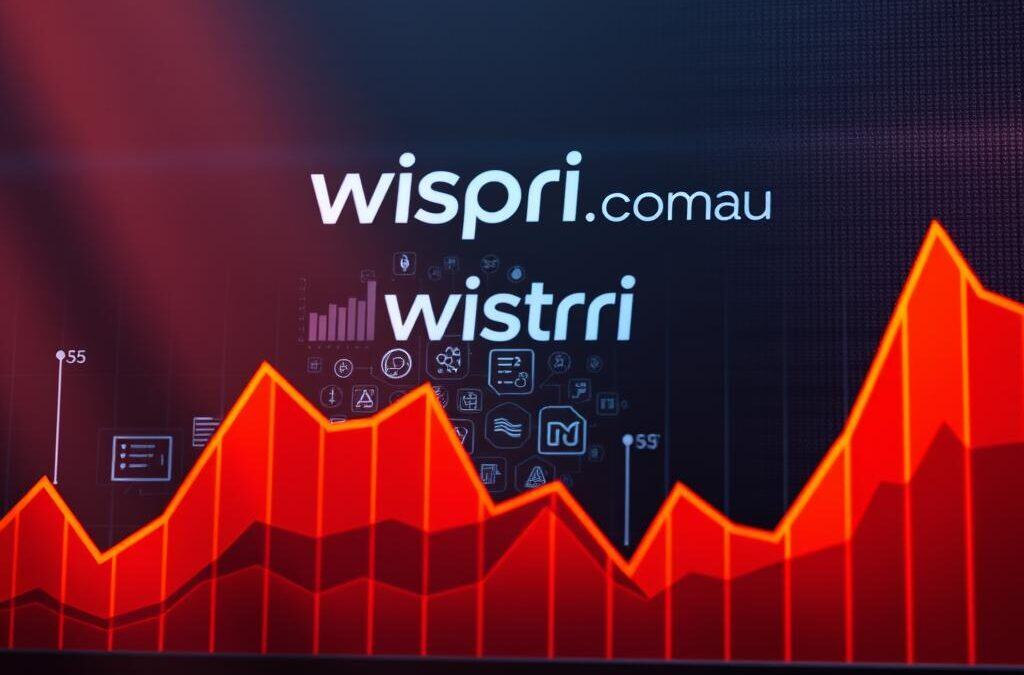In today’s competitive market, setting the right price for your product is crucial. A well-crafted pricing strategy can help your business stay ahead, attract more customers, and boost revenue. By leveraging dynamic pricing and real-time data, you can make informed decisions that align with market conditions.
Modern tools like AI and software have transformed the way companies approach price optimization. These technologies analyse demand, competitor actions, and other factors to suggest the optimal price for your product. This ensures you maximise your profit margin while staying competitive.
Ready to take control of your pricing decisions? Visit our website now and start tracking prices from your favourite ecommerce store – https://wispri.com.au/. Gain actionable insights and stay ahead in your industry.
Key Takeaways
- Smart pricing strategies can boost your business performance.
- AI and real-time data are essential for effective pricing decisions.
- Dynamic pricing helps you adapt to market changes.
- Tracking prices provides actionable insights for your business.
- Modern tools ensure you stay competitive and profitable.
Understanding the Importance of Price Optimisation
Accurate pricing decisions are vital for sustainable growth. When you set the right price, you not only attract more customers but also ensure your business remains competitive. A well-thought-out pricing strategy can significantly impact your revenue and profitability.
How Correct Pricing Fuels Business Success
Getting your pricing right can drive business growth and success. For example, when you align your prices with market conditions, you build trust with your customers. This trust translates into repeat purchases and long-term loyalty.
Additionally, accurate pricing helps you avoid margin leakage. By using data-driven insights, you can make informed decisions that enhance your profit margins. This approach ensures you stay ahead in a competitive market.
Impacts on Inventory Management and Customer Satisfaction
Correct pricing also plays a crucial role in inventory management. When your prices are aligned with demand, you avoid overstocking or shortages. This balance ensures you meet customer needs without unnecessary costs.
Moreover, satisfied customers are more likely to recommend your product to others. This word-of-mouth marketing can significantly boost your sales and revenue.
| Aspect | Correct Pricing | Incorrect Pricing |
|---|---|---|
| Customer Trust | High | Low |
| Inventory Control | Efficient | Inefficient |
| Profit Margins | Improved | Reduced |
By focusing on price optimization, you can create a sustainable business model that thrives in any market condition. Start making smarter pricing decisions today and see the difference it makes.
Price Optimisation Tools and Software
Advanced technology is reshaping the way companies set their prices. With the rise of AI and machine learning, businesses can now make smarter, data-driven decisions. These tools analyse customer behaviour, market trends, and competitor actions to suggest the optimal price for your product.

Modern pricing software automates complex decisions, saving you time and effort. It predicts the outcomes of different pricing strategies, helping you choose the best approach. This is especially useful in today’s multi-channel market, where data can be overwhelming.
Leveraging AI and Machine Learning for Pricing Decisions
AI and machine learning algorithms process vast amounts of data in real time. They consider factors like order history, demand fluctuations, and market conditions. This allows you to adjust prices dynamically, ensuring you stay competitive.
Integration with ERP and CRM systems enhances these tools further. Real-time price adjustments can be seamlessly applied across platforms. This not only improves efficiency but also boosts your profit margins.
By adopting these technologies, you can overcome the challenges of manual processes. Predictive modelling helps you anticipate changes and make proactive decisions. This ensures your business remains agile and profitable.
Ready to transform your pricing strategy? Consider implementing modern tools that leverage AI and machine learning. They’ll help you stay ahead in a competitive market and achieve your business goals.
Customer Behaviour, Price Elasticity and Effective Pricing Strategies
Understanding your customers’ behaviour is key to setting the right price. By analysing how they respond to changes, you can create strategies that boost demand and satisfaction. This approach ensures your business stays competitive and profitable.
Analysing Customer Data and Demand Trends
Historical customer data reveals valuable insights into demand trends. For example, you can identify peak buying periods or preferred price points. This information helps you adjust your pricing strategy to meet expectations.
Price elasticity is another critical factor. It measures how demand changes with price adjustments. By understanding this, you can set prices that maximise revenue without losing customers.
Implementing Price Testing and Dynamic Pricing
Methods like A/B testing allow you to experiment with different price changes. This helps you determine the most effective approach for your product. Dynamic pricing takes this further by adjusting prices in real time based on market conditions.
For instance, during high demand, prices can increase slightly to boost profit margins. Conversely, discounts can attract more buyers during slower periods. This flexibility ensures you stay competitive.
Using Segmentation to Tailor Your Pricing Approach
Customer segmentation allows you to group buyers based on their preferences or behaviours. For example, loyal customers might respond better to exclusive offers, while new customers may need incentives to make their first purchase.
By tailoring your pricing strategy to each group, you can reduce cannibalisation and increase satisfaction. This data-driven approach ensures your business thrives in any market condition.
Ready to refine your pricing? Start by analysing your customer data and experimenting with different strategies. The results will help you make smarter decisions and drive growth.
Navigating the Complexities of Modern Pricing
Navigating the complexities of modern pricing requires more than just intuition. In today’s fast-paced market, relying on manual methods can lead to inefficiencies and missed opportunities. Spreadsheets and homegrown tools, while familiar, often fall short when managing intricate pricing strategies.
Overcoming Limitations of Manual Processes
Manual pricing processes are prone to errors and inefficiencies. For businesses with extensive product portfolios, keeping track of price changes and demand fluctuations can be overwhelming. This often results in margin leakage and inaccurate pricing, which directly impacts your revenue.
For example, a small error in calculating costs or applying discounts can lead to significant losses over time. Manual methods also lack the agility needed to respond to real-time market changes, putting your business at a competitive disadvantage.
Why Modern Tools Are Essential
Modern tools and automation address these challenges effectively. Advanced software analyses vast amounts of data, ensuring your pricing strategy aligns with current market conditions. This not only reduces errors but also enhances your ability to make informed decisions quickly.
By adopting these solutions, you can streamline price adjustments and improve overall efficiency. This proactive approach ensures your business remains agile and profitable, even in a dynamic market.
Ready to move beyond manual processes? Embrace innovative tools that simplify pricing and drive growth. The right strategy can transform your approach and deliver measurable results.
Maximizing Profits Through Price Optimization
Effective pricing strategies can transform your business outcomes. By focusing on price optimization, you can enhance your profit margins while keeping your customers satisfied. This approach ensures your business remains competitive and profitable in any market.
Strategies to Enhance Profit Margins
Boosting your profit margins starts with smart pricing decisions. Here are some practical strategies:
- Analyse customer data: Understand buying patterns and preferences to set the right price.
- Segment your market: Tailor prices for different customer groups to maximise revenue.
- Monitor competitors: Stay informed about their pricing strategies to remain competitive.
For example, companies like TERREAL have successfully used data-driven methods to set clear profit targets. This ensures their business thrives even in challenging market conditions.
Tactical Approaches to Price Change Management
Managing price changes effectively is crucial for maintaining customer loyalty. Here’s how you can do it:
- Communicate changes clearly: Explain the reasons behind price adjustments to avoid confusion.
- Offer value-added services: Provide additional benefits to justify higher prices.
- Test new prices: Use A/B testing to evaluate the impact of price changes before full implementation.
As one industry expert noted,
“Transparency in pricing builds trust and ensures long-term customer relationships.”
By adopting these strategies, you can balance aggressive pricing with margin protection. This ensures your business achieves sustainable growth and profitability.
Real-Time Pricing and Dynamic Adjustment Techniques
Real-time pricing is reshaping how businesses respond to market demands. By leveraging advanced tools, you can adjust your pricing strategy instantly to stay competitive. This approach ensures your business remains agile and profitable, even in volatile conditions.

Integrating Price Guidance into ERP, CRM, and eCommerce
Seamless integration with ERP, CRM, and eCommerce platforms is key to consistent pricing. These systems work together to provide real-time data, enabling you to make informed decisions. For example, when customer behaviour changes, your pricing can adapt instantly.
This integration eliminates manual errors and ensures your product prices align with market conditions. It also enhances efficiency, allowing you to focus on strategic goals rather than routine adjustments.
Adapting to Market Conditions on the Fly
Dynamic adjustment techniques let you respond to market shifts in real time. Whether it’s a sudden spike in demand or a competitor’s price drop, you can act quickly. This flexibility helps you maintain your profit margins while staying competitive.
For instance, during peak seasons, you can increase prices slightly to maximise revenue. Conversely, discounts can attract more buyers during slower periods. This adaptability ensures your business thrives in any scenario.
Benefits of a Cloud-Native Pricing Engine
A cloud-native pricing engine offers unmatched flexibility and efficiency. It processes vast amounts of data in real time, providing actionable insights. This allows you to make smarter pricing decisions and reduce risks associated with dynamic markets.
Additionally, cloud-based tools are scalable and cost-effective. They eliminate the need for expensive hardware and ensure your business can grow without constraints. This makes them ideal for companies of all sizes.
By adopting real-time pricing and dynamic adjustment techniques, you can transform your business operations. These strategies not only improve performance but also ensure long-term success in a competitive market.
Data-Driven Pricing Strategies for Sustainable Growth
Harnessing the power of data can transform your pricing approach. By analysing historical sales data and using predictive modelling, you can make smarter decisions that align with market conditions. This ensures your pricing strategy remains effective and adaptable.
Utilising Historical Data and Predictive Modelling
Historical sales data provides valuable insights into customer behaviour and demand trends. For example, you can identify peak buying periods or preferred price points. This information helps you set the right price for your product.
Predictive modelling takes this a step further. It uses advanced algorithms to forecast future trends based on past patterns. This reduces guesswork and ensures your pricing decisions are backed by solid data.
Here are some key benefits of data-driven pricing strategies:
- Enhanced accuracy: Predict future demand and adjust prices accordingly.
- Reduced risk: Minimise errors by relying on data rather than intuition.
- Sustainable growth: Align your pricing with long-term business goals.
For instance, many companies have successfully used predictive analytics to adjust their pricing strategies. This has helped them stay competitive and achieve consistent revenue growth.
Comparing Traditional and Data-Driven Pricing
| Aspect | Traditional Pricing | Data-Driven Pricing |
|---|---|---|
| Accuracy | Low | High |
| Risk | High | Low |
| Adaptability | Limited | High |
By adopting data-driven tools, you can streamline your pricing process and make informed decisions. This approach not only improves efficiency but also ensures your business remains competitive in a dynamic market.
Conclusion
Adopting modern methods for setting the right value for your offerings is essential in today’s dynamic market. From analysing customer behaviour to implementing real-time adjustments, a well-crafted pricing strategy can transform your business outcomes.
Using advanced tools and a data-driven approach ensures you stay competitive. It helps you make informed decisions that align with market trends and customer needs. This not only boosts efficiency but also enhances your profit potential.
Ready to take the next step? Visit Wispri’s website to explore resources that simplify pricing and drive growth. Start making smarter decisions today and see the difference it makes for your business.
FAQ
Why is price optimisation important for my business?
Price optimisation helps you set the right price for your products, balancing customer demand and profitability. It ensures you stay competitive while maximising your margins.
How can AI and machine learning improve pricing decisions?
AI and machine learning analyse vast amounts of data to predict demand, identify trends, and suggest optimal prices. This helps you make smarter, data-driven decisions quickly.
What is dynamic pricing, and how does it work?
Dynamic pricing adjusts your prices in real-time based on market conditions, demand, and competitor activity. It ensures you stay competitive and maximise revenue.
How can customer segmentation improve my pricing strategy?
Customer segmentation allows you to tailor prices to different groups based on their behaviour and willingness to pay. This personalised approach can boost sales and customer satisfaction.
What are the benefits of using a cloud-native pricing engine?
A cloud-native pricing engine offers scalability, real-time adjustments, and seamless integration with your ERP, CRM, and eCommerce systems. It helps you adapt quickly to market changes.
How can historical data and predictive modelling enhance pricing strategies?
Historical data and predictive modelling provide insights into past trends and future demand. This helps you set prices that align with market conditions and customer expectations.
What challenges do manual pricing processes face?
Manual processes are time-consuming, prone to errors, and struggle to keep up with market changes. Automating pricing with tools ensures accuracy and efficiency.
How can I manage price changes effectively?
Start by analysing market conditions and customer behaviour. Use tools to test different price points and monitor their impact. This ensures smooth transitions and minimal disruption.

